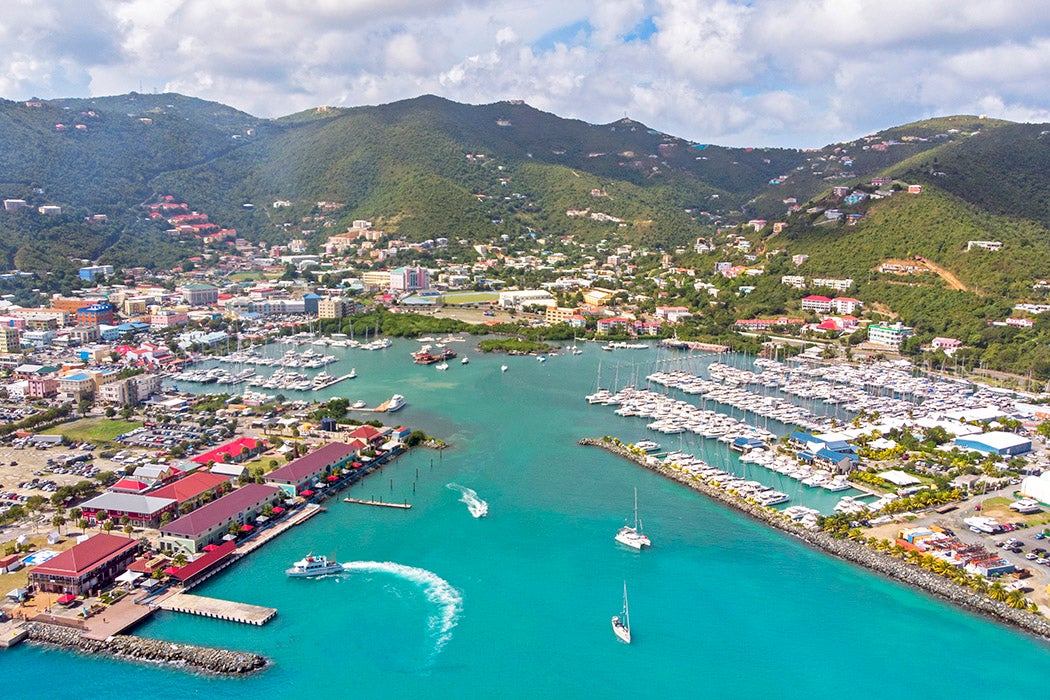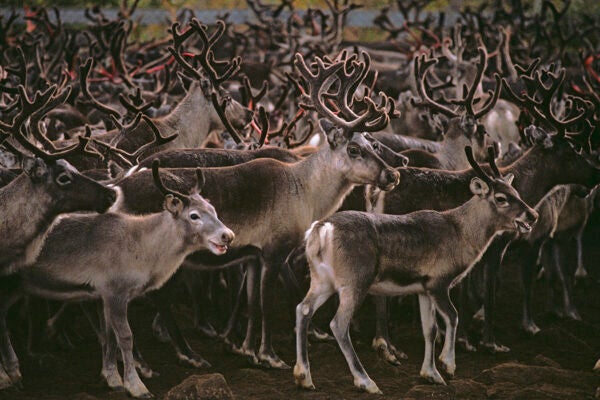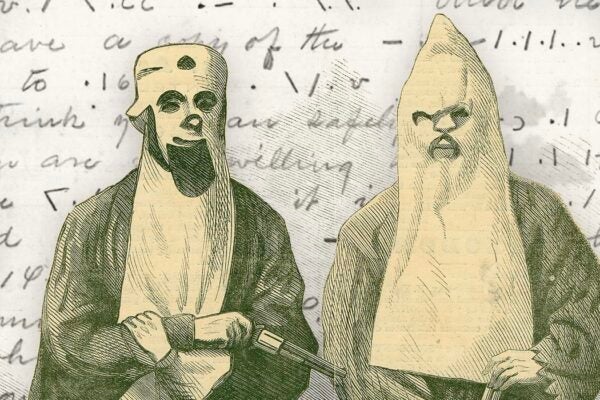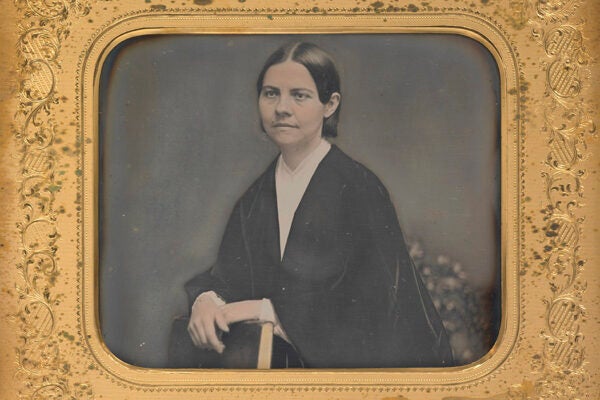You don’t usually associate rainy England with white sand beaches, coral reefs, and tropical islets. But the British Virgin Islands are part of what is now a very small collection indeed of UK overseas territories that still maintains fealty to London and the Crown. The BVI are some of the breadcrumbs, scattered around the globe, that have resisted the lure of independence, preferring not to break the relationship with their colonial ruler. And they have extremely diverse company, from the Falkland Islands at the tip of South America to the island of Bermuda in the Atlantic Ocean to the tiny territory of Gibraltar on the southern tip of Spain among others.
Yet the BVI have a history that isn’t entirely dominated by the UK. In fact, the first European to encounter the islands wasn’t British—he was an Italian. It was Christopher Columbus who named this collection of small islands, as Norwell Harrigan and Pearl I. Varlack explain in one example of their pioneering historical essays on the islands, published in a 1977 issue of the Journal for Black Studies. On November 14, 1493, they report, Columbus
came upon an island which he named “Isla de la Santa Cruz” (called by the natives “Ay Ay,” subsequently renamed “St. Croix” by the French). Continuing his voyage westward he sighted a few days later an array of islands, islets, and rocks (now known to be over 100 in all). On these, in honor of St. Ursula and her 11,000 martyr virgins (because of their number and, it is claimed, to exaggerate his find in the eyes of his patrons, Ferdinand and Isabella of Spain), he bestowed the name “Las Once Mil Vírgines” (the 11,000 Virgins).
Though their language is dated, Harrigan and Varlack capture the weight of colonialism on the islands and their inhabitants. The centuries following Columbus’s “discovery” saw a familiar squabble take place between colonial powers including the Dutch, English, French, Spanish, and Danish over control of these, and many other, islands in the Caribbean. In 1672, it was the Danes who seized control of some of the fifty-plus islands in the Virgin territory to create the Danish West Indies. By the end of the seventeenth century, the British had captured Tortola from the Dutch and annexed Anegada and Virgin Gorda, while the Danes had gained control of Saint Thomas, Saint John, and Saint Croix.
The cost of shipping enslaved people from West Africa to work on sugar plantations, combined with the terrain and low rainfall, meant that estates were never lucrative. Emancipation for the enslaved following the Slavery Abolition Act of 1833 and the decline in demand for British-produced sugar after the Napoleonic Wars resulted in bankruptcy for plantation owners, as John P. Augelli explains in another early contribution to the field of Caribbean Studies, published in 1956 in Geographical Review.
“The fall of estate agriculture was highly instrumental in severing the socioeconomic ties of the islands with Britain and orienting them toward St. Thomas,” Augellis writes. With the emergence of a new economy based primarily on subsistence farming, plantations
had nothing to sell except a small surplus of…[live]stock and a large surplus of labor, and for these there was little demand in the British Caribbean. Even if a demand had existed, it probably would have been largely nullified by the disadvantages of primitive transport and the relatively long distances that separated the BVI from other British possessions in the Indies. In contrast, the Danish island of St. Thomas, less than 30 miles away, offered the advantage of nearness plus some opportunity for employment and the sale of scrub stock.
The status of the BVI as very much the junior partner in the Virgin Islands group was cemented in 1917 when the United States bought the Danish islands for $25 million and renamed them the United States Virgin Islands. The British islands became increasingly dependent on their fellow colonialists, even going so far as to adopt the dollar as their own currency in 1959.
The ensuing decade saw immense changes on the BVI. From a limited degree of self-rule being won in 1967 to large-scale immigration from other Caribbean islands as well as the UK, the islands were quickly shaking off their stagnant pre-industrial look. W. Errol Bowen captured this shift in his 1976 article, “Development, Immigration and Politics in a Pre-Industrial Society: A Study of Social Change in the British Virgin Islands in the 1960s,” written almost simultaneously with the islands’ transformation.
“From having no banks in 1960,” Bowen writes,
there were four major international banks in 1969. Electricity service was being extended throughout Tortola, and there was an efficient telephone service with direct dialing, not only internally, but to the US Virgins as well. Whereas at the start of the decade all goods for Tortola had to be off-loaded in St. Thomas or Puerto Rico, there was now a direct shipping service to Road Town from Miami, New York, and London. At the end of the decade too, the islands were being serviced by three airstrips, and even if the airports were still fairly primitive, at least, those serving Tortola and Anegada were long enough to permit turbo-props. By the end of the decade, land speculators were hard at work, trying to get from Virgin Islanders land that had been in some families as long as 150 years.
Today, the schism between the US and British sections of the Virgin Islands is hardly one of the world’s boiling points of political and cultural friction. Yet, as the lyrics from “De Test,” a popular 1990s tune in the soca genre shows, the effects of slavery, post-colonialism, and stereotypes about the BVI have had an impact on the local population.
Weekly Newsletter
“This is de test for all de rest. This is de test,” runs the chorus. The song was written for the Tortola Festival, which opens with a pre-dawn musical face-off between soca bands from the BVI and the USVI, and the word “all” is doing some heavy lifting for the BVI sense of self, Colleen Ballerino Cohen explains. In an essay on the cultural politics of nation building in the BVI, she writes that
it is this long and complicated relationship [with the USVI], coupled with the ambivalence with which many British Virgin Islanders approach the project of constituting a distinctive BVI identity for themselves, that accounts at least in part for both the ambiguity encoded in “De Test” and the seriousness of the upcoming festival competition to which the song alludes.
Festival attendees would have understood the challenge in the song, its lyrics marking off-islanders, even those from USVI, as “other,” filed under the heading “all de rest.”
With a population of only 30,000, the BVI rely heavily on tourism and offshore banking today. The inevitable accompanying construction and development has drastically altered the physical landscape of the islands, as Cohen explores further in her 2010 book, Take Me to My Paradise: Tourism and Nationalism in the British Virgin Islands. Examining photos of the BVI capital on the island of Tortola, she observes that as recently as 1960, the town was surrounded with green hillsides and agricultural plots. In 2008, however, photos show that “houses and apartment houses dot the hillside running all the way from the harbor to the crest of the hills, and roads in different stages of construction crisscross the mountains that surround Road Town.”
While tourists may look for a pre-industrial “old Caribbean” on their holidays, locals are busy bringing the BVI into the modern world. This contradiction alone shows that “de test” of what these islands are, or will be, is nowhere near its finale.







